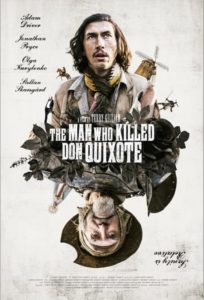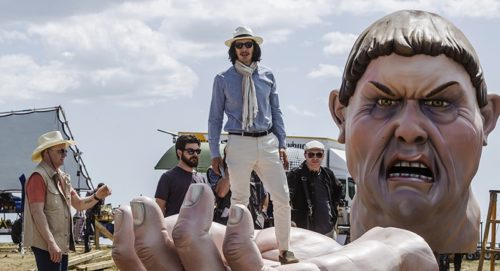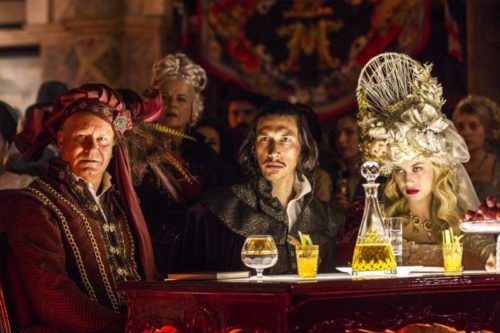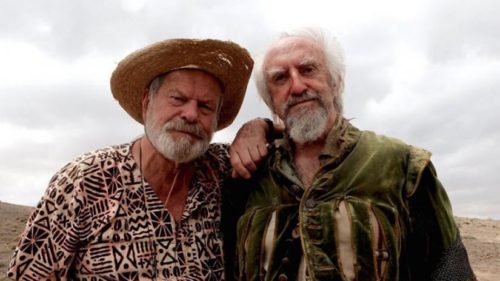
He began working on it in ’89, started filming in 2000, scrapped the whole thing two months later following a string of unlikely disasters, tried in vain to restart it for the next seventeen years until, at last, Terry Gilliam shot his cursed Don Quixote movie, The Man Who Killed Don Quixote, with apparently no mishaps whatsoever, and released it haphazardly in 2018.
It was so haphazard a release that I didn’t even see it. A Terry Gilliam movie! Though, to be fair, after his last two movies (I dare you to name them from memory), one could hardly be blamed for missing the new one. Gilliam hasn’t exactly been on a run lately. The preview looked dodgy. Reviews were not favorable. Even the favorable ones could barely muster any real excitement.
So I slept on it. Until I didn’t. I shouldn’t have slept so long. The Man Who Killed Don Quixte is good. It’s actually really rather very good. It’s too long and spends a lot of plotless time just meandering—but hey! So does the book. And nobody’s calling out Cervantes.

It’s got that Terry Gilliam feeling all over it. It looks like one of his movies. It plays like one of his movies. Adam Driver is great as the movie director who refuses to be a dreamer, and Jonathan Pryce is dynamite as Quixote, the guy who refuses not to be a dreamer.
As Gilliam had originally written his story, time travel was involved, but by the time he actually shot it, many things had changed. The story-as-filmed follows Toby (Driver), an obnoxious director of commercials, as he shoots a Quixote-related ad in Spain near the town in which he ten years previously shot a student film about Quixote. He wanders off the set to go take a look at the old place, and begins to lose sight of what’s real and what’s imaginary, what’s past and what’s present.
Helping him along is an old cobbler who played Quixote in his film, who, it turns out, still lives there, and has been believing himself to be Quixote ever since. Upon seeing Toby, he recognizes him immediately—as his faithful, not very bright servant, Sancho Panzo, and off they go on a series of Quixote-like adventures into goofiness.

Which, sure, these adventures go on a bit too long, and maybe Toby is a little too one-note for a little too long, but Driver is excellent regardless, and by gosh I rather liked it.
We get Gilliam-style giants, an old castle, multiple windmill-tiltings, a faux trip to the moon, and, as ever, a lead actress (Joana Ribeiro) with whom the lead actor has no visible chemistry (see: Brazil, 12 Monkeys, etc.). What more do you want or expect of a Gilliam film?
I suppose what people expect is what they saw in Brazil and Time Bandits and The Crimson Permanent Assurance when they were young. They expect to have their brains permanently rewired by a mad and idiosyncratic genius. This The Man Who Killed Don Quixote will not do. But still. It’s Gilliam’s best movie since Fear and Loathing in Las Vegas (perhaps better, but then I didn’t love that one), and well worth your time.


I did watch this a while ago. It was a lot better than Tideland and a bit better than Zero Theorem but I found it mostly befuddling.
Another positive for this Gilliam effort. Have to watch it. The source material is eminently fit for Gilliam, so how bad can it be?